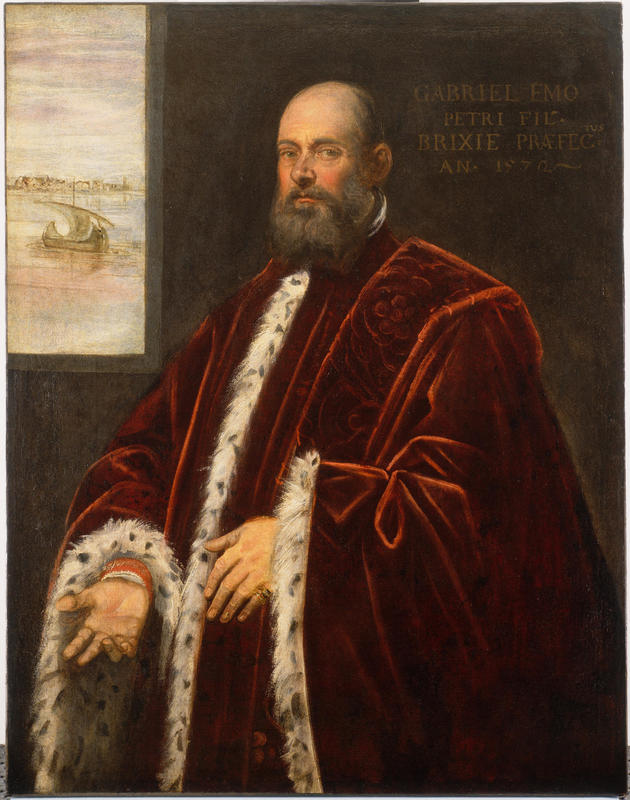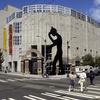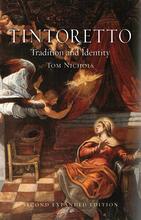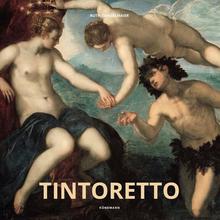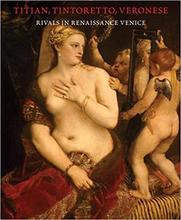More about Portrait of Gabriele di Pietro Emo, Procurator of San Marco
- All
- Info
- Shop

Sr. Contributor
Jacopo Tintoretto knew what the people of Venice wanted, and he secured financial stability by delivering it.
For artists today, social media is a great way to build their brand and do some self-marketing. For Italian Renaissance artists, marketing meant churning out a crazy amount of paintings, all at an impeccable level of quality. Tintoretto did just this. Despite his reputation of creating shockingly modern paintings for churches, this particular portrait is rather tame. His daring public works paved the way for a lucrative practice of securing commissions from Venetian elites. Tintoretto received so many portrait commissions that he had to make his business more sustainable. Being something of a marketing genius, he figured out the perfect formula for a quick, yet meaningful portrait. Near-blank backgrounds and an emphasis on costumes and gestures that convey his sitters’ identities and personalities.
This is a textbook example of a Tintoretto portraits for the Venetian ruling class, and we can tell exactly who this guy is by what he’s wearing. Our sitter, Gabriele di Pietro Emo, wears the trademark red velvet robe with an ermine trim that was reserved for procurators. Procurators were among the most powerful political positions in Venice and held offices similar to today’s treasurers. Tintoretto cleverly shows this procurator with his hands open and facing the viewer, which represented traits of receptiveness and transparency. I’m guessing Gabriele di Pietro Emo wanted us to know that he was an honest man, especially with his financial-centric job. Like I said, Tintoretto gave the people what they wanted.
However, Tintoretto’s rise to fame was not without consequence. His success challenged Titian’s stronghold as the foremost Venetian painter. As you can imagine, Titian did not take this lightly. Feeling threatened, Titian prevented Tintoretto from gaining some commissions and blocked his entry into artistic organizations. Likewise, Giorgio Vasari, a staunch traditionalist and biographer of the Italian Renaissance artists, disparaged Tintoretto’s rapid brushwork and techniques that others admired which ultimately allowed for his rise to greatness.
Tintoretto’s portraits of the wealthy ruling class seemingly oppose the brazen imagery of the more inventive works for which he is best remembered. But hey, guy’s gotta eat, right? Thankfully, Tintoretto never forgot his roots and, even after his commercial success, always remembered the poorer churches that hired him early in his career.
Sources
- Echols, Robert. “Jacopo Tintoretto.” Collection. National Gallery of Art. 21 March 2019. https://www.nga.gov/collection/artist-info.1929.html. Accessed 5 June 2020.
- Hartt, Frederick, and David G. Wilkins. History of Italian Renaissance Art: Painting, Sculpture, Architecture. Upper Saddle River, NJ: Pearson Prentice Hall, 2007.
- Kress Foundation. “Browse the Collection.” Collection. http://www.kressfoundation.org/collection/repositorymap.aspx?id=72. Accessed 5 June 2020.
- Loos, Ted. “An Old Master of Painting Was a Master of Marketing.” In The New York Times. Arts. 12 March 2019. https://www.nytimes.com/2019/03/12/arts/jacopo-tintoretto-national-gall…. Accessed 5 June 2020.
- National Gallery of Art. “A Procurator of Saint Mark’s.” Collection. https://www.nga.gov/collection/art-object-page.41694.html. Accessed 5 June 2020.
- Seattle Art Museum. “Portrait of Gabriele di Pietro Emo, Procurator of San Marco.” Collections. http://art.seattleartmuseum.org/objects/13903/portrait-of-gabriele-di-p…. Accessed 5 June 2020.
- The Art Story. “Jacopo Tintoretto.” Biography. https://www.theartstory.org/artist/tintoretto/life-and-legacy/#biograph…. Accessed 5 June 2020.
- University of Michigan. “Procurator of San Marco.” Glossary. https://quod.lib.umich.edu/cgi/t/text/text-idx?c=acls;cc=acls;rgn=div2;…. Accessed 5 June 2020.

